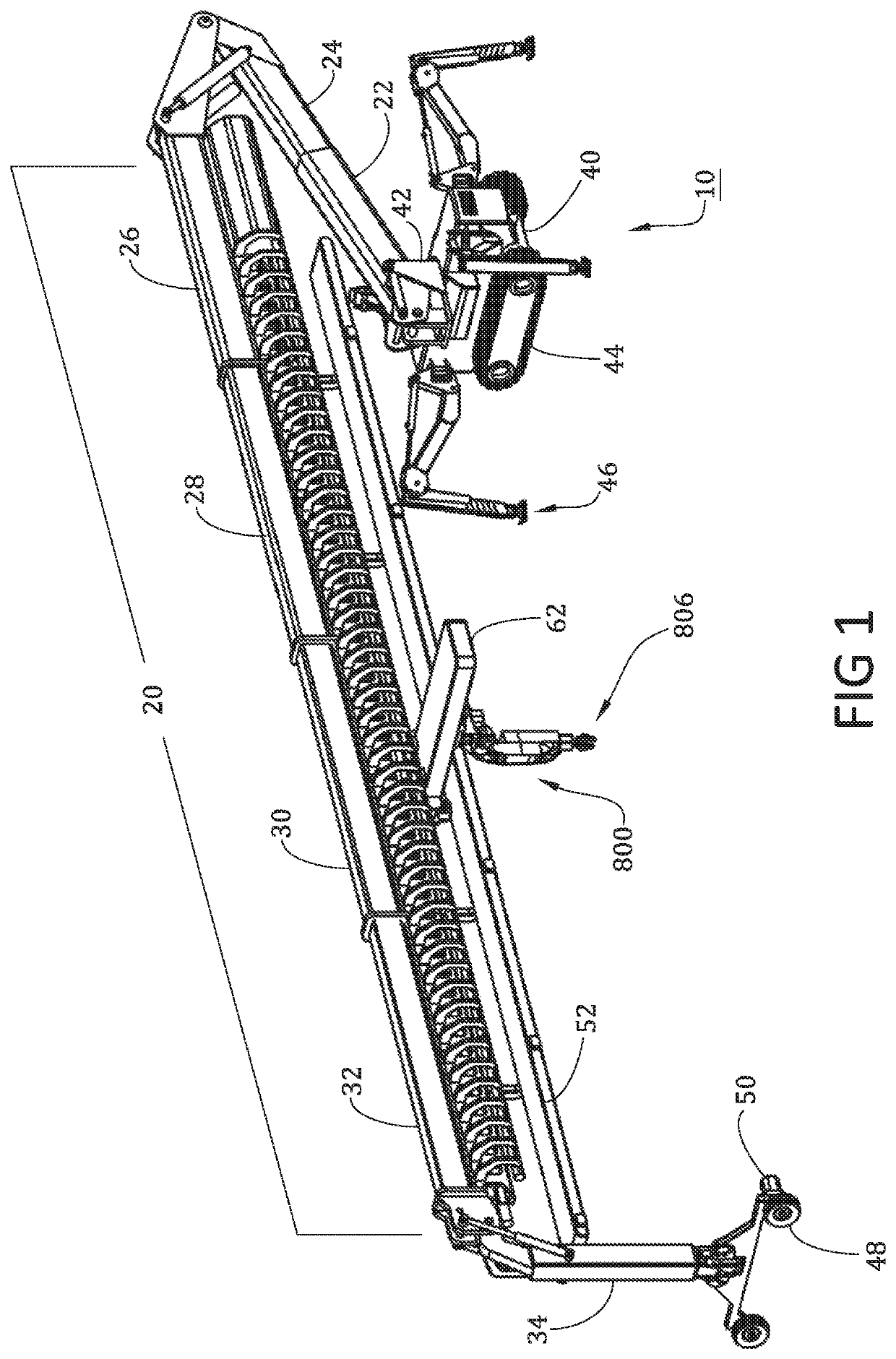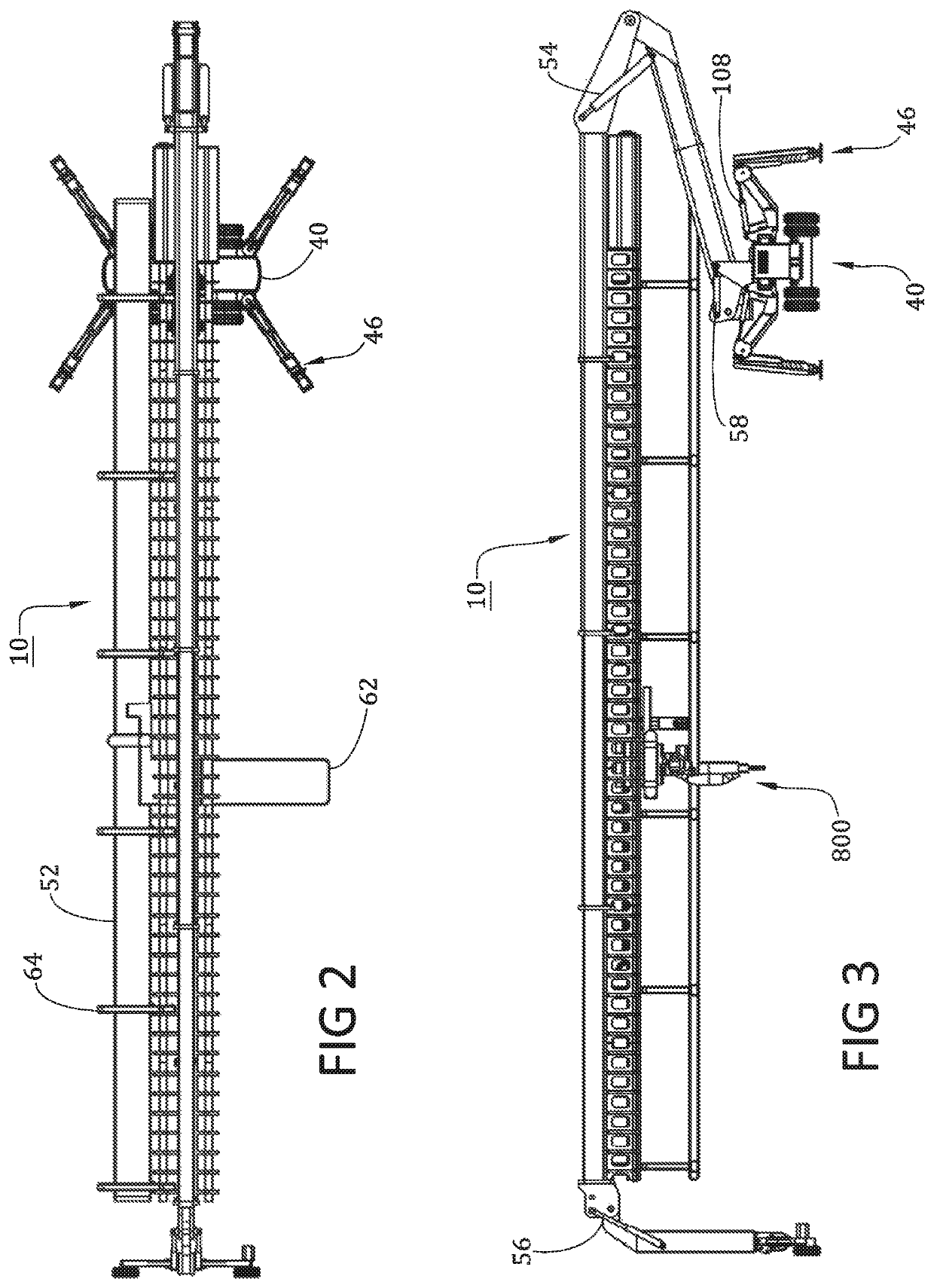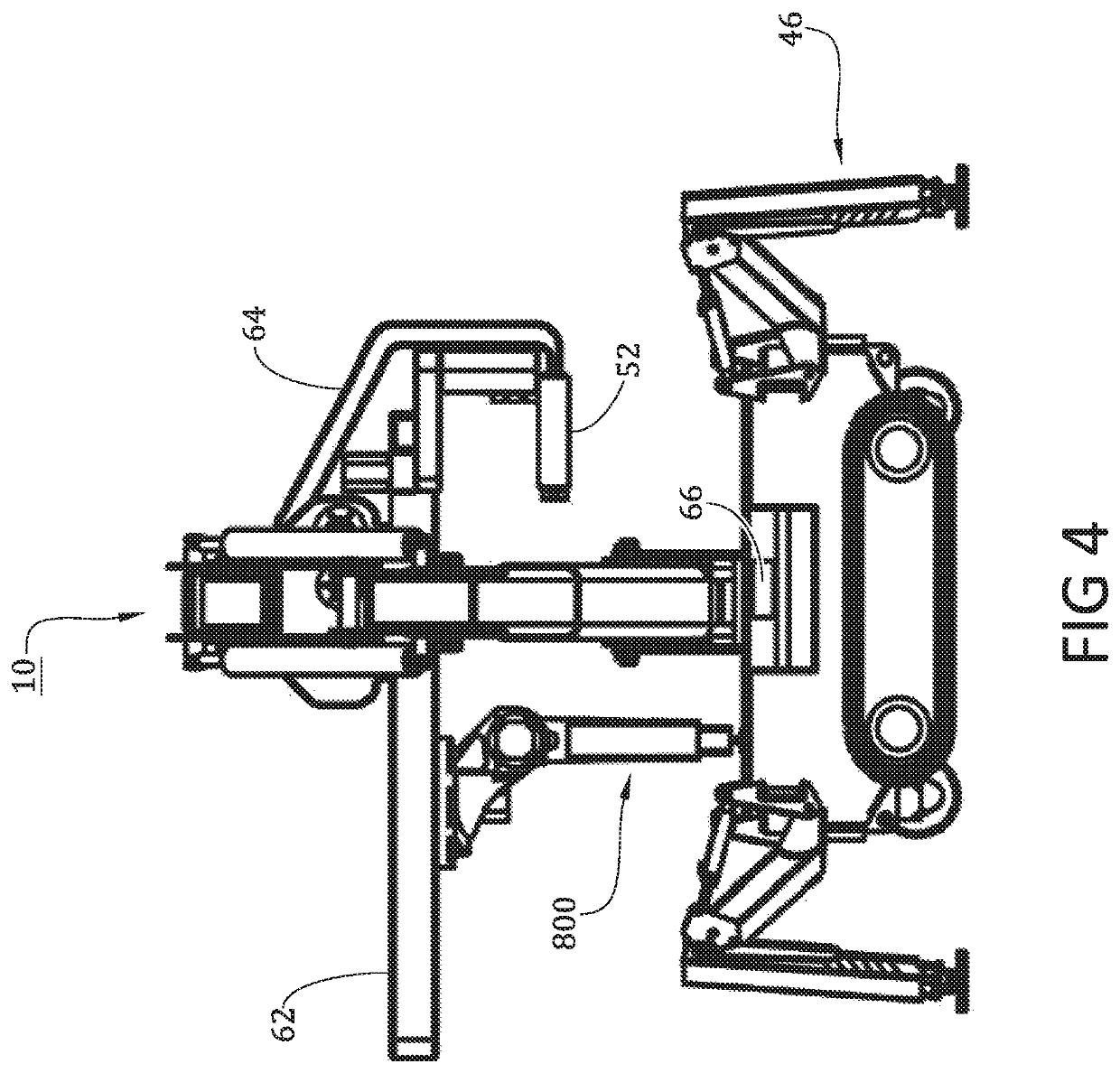Portable robotic construction system
a robotic construction and portable technology, applied in mechanical machines/dredgers, masonry, land surveying, etc., can solve the problems of large scale additive fabrication prototypes in development, time-consuming and labor-intensive tasks, and the inability to move large structures into place at a construction site. light weight and low torque tasks
- Summary
- Abstract
- Description
- Claims
- Application Information
AI Technical Summary
Benefits of technology
Problems solved by technology
Method used
Image
Examples
Embodiment Construction
[0229]FIGS. 1,2,3,4 and 5 illustrates the presently preferred embodiment 10 of the invention. The drawings illustrate a portable and expandable gantry with robotic arm attachments and implements 806 to oversee construction and assembly procedures. The bridge of the gantry 20 is made up of extendable bridge boom sections of the gantry 26, 28, 30 and 32. The main chassis 40 is connected to a lower turret boom riser 22 by a turret 42 that can be mechanically controlled to rotate 360 degrees as shown in FIG. 6. The lower turret boom riser 22 can pivot upwards as well as extend outward with the extendable boom 24 to increase the height of one side of the gantry. On the other side of the gantry bridge is a support jib boom leg 34 that can pivot from the extendable bridge boom section of gantry 32 shown in FIGS. 1, 18, 19, and 20. The support boom leg can articulate creating different gantry configurations which can be seen in FIGS. 40, 41, and 42. The support leg has Extendable Support Ji...
PUM
 Login to View More
Login to View More Abstract
Description
Claims
Application Information
 Login to View More
Login to View More - R&D
- Intellectual Property
- Life Sciences
- Materials
- Tech Scout
- Unparalleled Data Quality
- Higher Quality Content
- 60% Fewer Hallucinations
Browse by: Latest US Patents, China's latest patents, Technical Efficacy Thesaurus, Application Domain, Technology Topic, Popular Technical Reports.
© 2025 PatSnap. All rights reserved.Legal|Privacy policy|Modern Slavery Act Transparency Statement|Sitemap|About US| Contact US: help@patsnap.com



